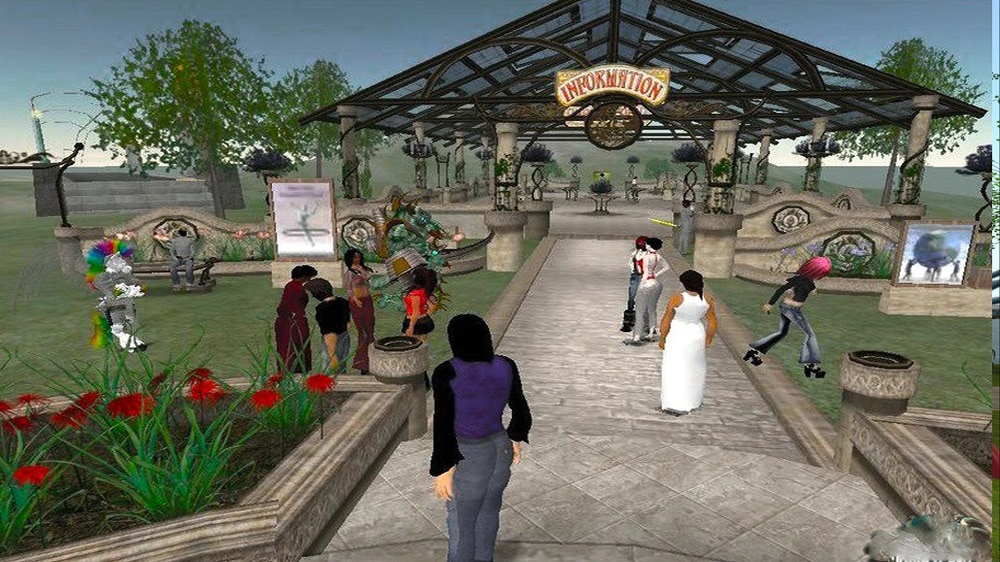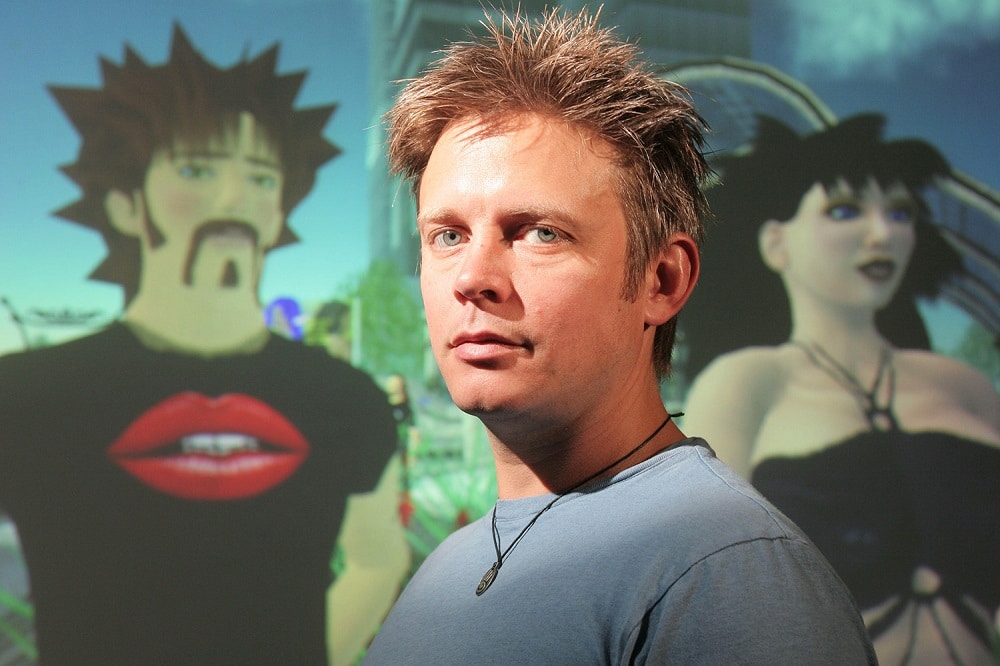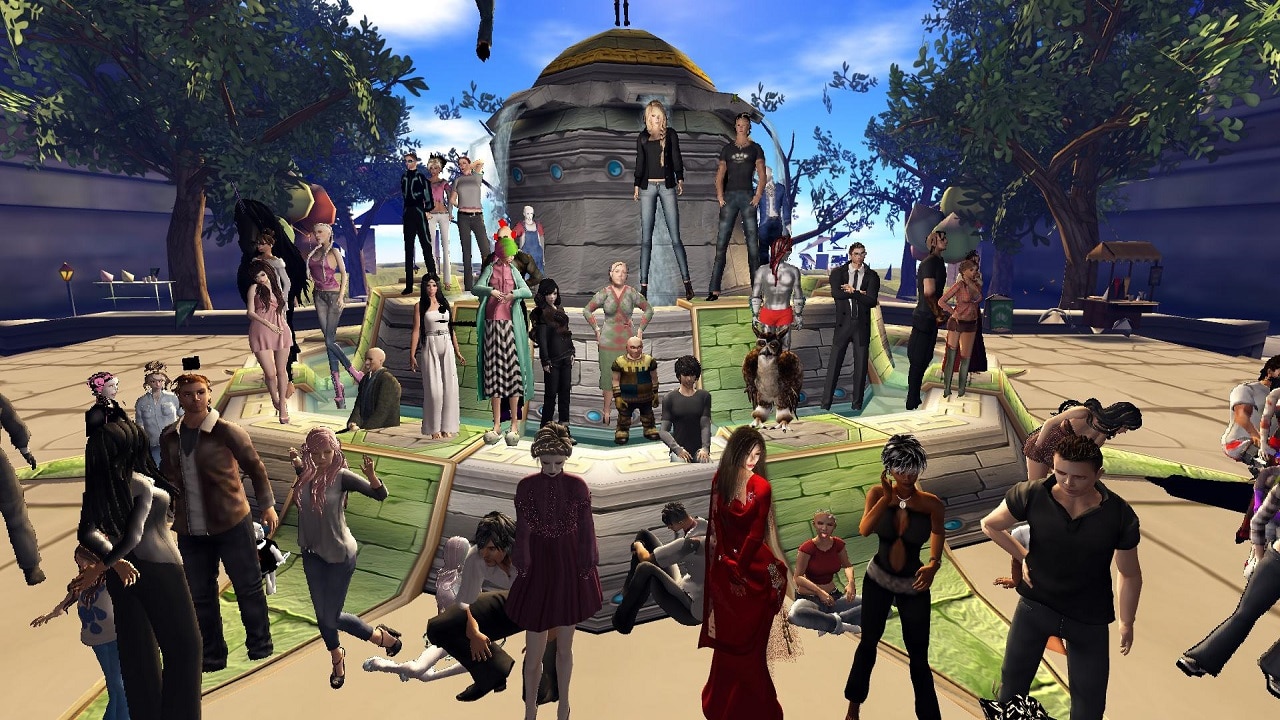Philip Rosedale is the founder of Second Life, one of the earliest and longest-lived virtual worlds which, in the early 2000s, gave birth to what we now label as metaverso. This online platform, thanks to the latest technologies and a deeper knowledge of the metaverse, has the ability to continue what started more than twenty years ago.
Today, Second Life, his second life can begin and keep the title of pioneer of the metaverse.
Second Life: Philip Rosedale is ready to return
Lately Philip Rosedale revealed that he would be returning to the company he founded in 1999, Linden Lab, as a strategic consultant.
No one has managed to build a virtual world like Second Life. Big Tech, by giving away VR headsets and building a metaverse on their platforms, won’t create a magical, one-of-a-kind digital utopia for everyone. Second Life has managed to create a positive and rich experience for its residents – with room for millions more. At the same time, he has built a thriving subscription-based business. Virtual worlds don’t need to be dystopias.
What Second Life did, in fact, was introduce people to the metaverse even before this concept took on the name and meaning it has today. Rosedale magically managed to give life to a project which, twenty years later, it can revolutionize technology once again. The platform created by Rosedale has managed to incorporate many aspects of social media in a three-dimensional world persistent with the user represented as an avatar.
Linden Lab Executive President, Brad Oberwager, revealed that what Rosedale created with Second Life has stood the test of time and succeeded in place it for the future. In fact, for some months we have been talking about the metaverse and recently many companies, including also Meta by Mark Zuckerberg, they started atadvance their personal visions for the metaverse.
However Rosedale is particularly skeptical regarding some dynamics that support the current one era of online life. He named various elements, come on advertising-based social networks, the environmental impact of the energy generated by the extraction operations of Bitcoin.
After all, who better than Rosedale can talk about this topic? And who better than him can repeat and win over the public again thanks to the modern technologies we have today?
Rosedale’s virtual social platform pioneered many of the concepts that only now we know how metaverso. Second Life has managed to explore the notions of digital identity, virtual properties, digital economies ed online multiplayer ecosystems in the early 2000s, when Facebook only existed to connect students from elite universities.
With the technologies we have today, Rosedale is capable of revolutionize once again the concept of metaverse. It can offer Second Life one more modern form and will be able to give the public a another metaverse, completely different from that of other companies.
A leap into the world of Second Life
For those who don’t know what we’re talking about, let us introduce you to the pioneer of the metaverse.
Second Life is one online multimedia platform officially launched in 2003 and which allows people to create themselves in the form of avatar and have one second life in a virtual world online. The platform has seen rapid growth for a few years and in 2013 boasted about one million regular users.
Growth eventually stabilized and, by the end of 2017, the number of active users had dropped to “between 800,000 and 900,000”. Second Life can almost be considered as a online multiplayer role-playing game but without set goals to follow or complete.
The virtual world is freely accessible via Linden Lab’s client software or via alternative third party viewers. Second Life users, also called residents, they create virtual representations of themselves, called avatar, and I am capable of do anything. They can interact with places, objects and other avatars (thus other people exploring that world).
They can meet other residents and socialize with them, they can participate in individual and group activities, build, create, buy (the game boasts the Linden Dollar, its official virtual currency) and exchange virtual goods and services with each other.
One of the main aspects of Second Life concerns its own internal economy. The platform boasts a closed-loop virtual token called “Linden Dollar (L$)”. L $ can be used to buy, sell, rent or exchange land or goods and services with other users. It is a closed circuit virtual token to be used only within the Second Life platform.
The Linden Dollars don’t have monetary value e are not redeemable for a monetary value from Linden Lab. A resident with a surplus of Linden Dollars earned through an experiential activity or game in Second Life may however request to refund your surplus Linden Dollar to PayPal.
Linden Lab reports that the Second Life economy spawned $ 3,596,674 in economic activity during September 2005. In September 2006 Second Life had a GDP of 64 million dollars. In 2009, the total size of the Second Life economy grew by 65% to $ 567 million, about 25% of the entire US virtual goods market.
The residents know what they are doing

There is a high level of business activity in Second Life. Residents are indeed capable of create virtual objects e other contents. The most interesting aspect concerns the rights: users keep in fact all rights to their contents, which means they can use Second Life for to distribute e sell their creations
The online marketplace lists roughly 2.1 million objects created by users. At its peak, around 2006, hundreds of thousands of dollars rolled over the platform as residents they created and sold a wide variety of virtual goods. Philip Rosedale’s Second Life quickly became profitable thanks to the sale and rental of virtual real estate.
2006 also saw the first real world millionaire of Second Life; Ailin Graef, better known as Anshe Chung (his avatar). The user converted an initial investment of $ 9.95 in over a million dollars over the course of two and a half years. He built his fortune primarily by buying, selling and renting virtual real estate.
Many too companies in the tech sector have attempted to use this platform to market products or services to the public. IBM, for example, he bought 12 islands within the platform for the virtual training and the simulations of key business processes. However, it has since switched to other platforms due to maintenance costs.
The same goes for musicians, podcaster e organizations (including CNET, Reuters, NPR’s The Infinite Mind, and the BBC). All of them have had, or still have, a second life within Second Life.
Between virtual goods we find practically everything: buildings, vehicles, devices of all kinds, animations, clothing, skin, hair, jewelry, flora and fauna, and works of art. Services include the business management, l’entertainment and the creation of personalized content, which can be divided into the following categories:
- Construction;
- Texturing;
- Scripting;
- Animation;
- Artistic direction;
- Producer / financier of the project.
I L $ can be purchased using US dollars e other local currencies on the LindeX exchange provided by Linden Lab. Customer USD wallets obtained from Linden Dollar sales on Lindex are most commonly used to pay for subscription fees and of level of Second Life.
Only a relatively small number of users earn enough to apply for a refund to PayPal.
Philip Rosedale’s metaverse and Second Life

As the creator of the first experience in the metaverse and as a person knowledgeable about the limits of VR technology, Rosedale has a lot of insights for the latest contenders to the metaverse crown. During an interview with IEEE Spectrum, Rosedale talked about the challenges to face when you want to build an immersive virtual world.
According to Rosedale, there was suddenly talk of the metaverse due to COVID-19, precisely at the moment when people worried about having to move some social and entertainment activities online.
According to him there are many large companies that are standing trying to figure out how they can earn from this point of view. Despite corporate metaverse views, according to Rosedale Second Life, currently, it is still “the biggest and closest thing to a metaverse we have, as far as adults are concerned.” However, according to him, the metaverse is not yet a world suitable for everyone.
If you are talking about people who want to go to a live concert, or who want to shop or something, I think Second Life still has $ 650 million a year in transactions and a million people using it. But Second Life hasn’t grown beyond one million people. Yes, during COVID-19 it grew. However did not explode, it hasn’t gained a billion users. And Facebook’s hope is that there are a billion people who use his metaverse.
I think the reason it didn’t happen is simply because most adults I’m not comfortable yet engaging with new people, or engaging socially, in context multi-player online. I’ve worked a lot on this and it’s been incredibly rewarding for the people it worked for.
This world though it is not yet suitable for everyone. People are not yet able to communicate with face and body language in a way that is somehow adequate. And I think we are facing a very steep precipice. If you have the alternative of living your social life in the real world, I think the vast majority make that choice. They do not divide their social life in the real world and even online. I think that’s the reason we don’t see an actual explosion yet, and nothing Facebook has said or demonstrated changes what I just said.
Second Life was capable of to offer e manage virtual social experiences…















Leave a Reply
View Comments